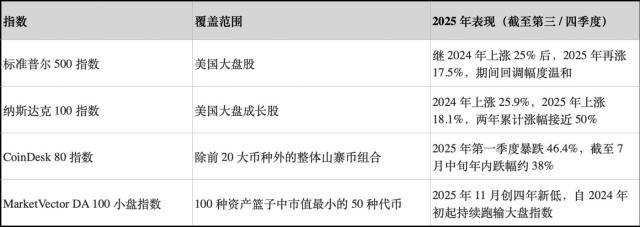Here is the English translation of the text, with the specified terms translated as requested:
The brutal market black swan event, the Trump administration imposed tariffs on Canada and Mexico, the Mexican and Canadian governments retaliated by imposing tariffs on the United States, which greatly strengthened the position of the US dollar. On that day, the BTC price plummeted to as low as $91,500, and then rebounded to reach a high of $102,000 in the evening, before falling back down.
Over the past week, BTC has been oscillating narrowly in the range of $94,000-$99,000. On February 18th during the US trading session, it quickly plunged to $93,300, and on-chain data also showed that a whale was liquidated $14 million in WBTC after BTC fell below $94,000. The Fear and Greed Index has also been in a state of fear since February 7th.
Not only has the trading volume on exchanges continued to shrink, with Binance's BTC spot trading volume at less than half of the previous week's level on a weekly basis, on-chain transaction data is also very low. Pump.fun has only had 4 tokens with a market cap over $1 million in the past 24 hours, and protocol revenue has also plummeted, shrinking by nearly 90% from its peak.
The "mess" left after the Trump token frenzy is still affecting the Altcoin market, as Web2 is extracting liquidity from Web3 and causing a lot of legal disputes. The sentiment on social media is also very pessimistic, with many saying "at this rate, the Web3 industry is doomed." Macroeconomically, US inflation data continues to rebound, and the narrative of rate cuts to inject liquidity seems to be faltering. Has this bull market really ended? Let's see what the traders think.
Technical Analysis Perspective:
@CryptoPainter_X: Although BTC is still in a safe zone and has not broken below key support, the BTC/Gold exchange rate is in a waterfall decline. This is a standard pattern of a breakdown below key support, followed by multiple failed rebounds before the downtrend resumes. The best-case scenario now is for it to find support here and form a descending wedge, which could lead to a fake breakdown. Otherwise, the BTC price denominated in Gold may enter a bearish trend before the USD-denominated price.
@CryptosLaowai: The current decline is not yet complete. There is no obvious support around $93,600, and it has not yet retested the uptrend line from January or the major platform support. The rebound strength is not strong, and it needs to find larger support, potentially around $92,000. After that, there will be a rapid upward breakout, targeting around $102,000, followed by a smaller cyclical decline to around $75,000, forming a larger ascending wedge pattern, reaching around $120,000 around May, marking the end of the bull market.
@Guilin_Chen_: BTC currently appears to be experiencing a small-scale violent rebound around the MA120 on the daily chart, which is a normal adjustment after this round of BTC's rise. The first support below BTC is around the daily MA120 at $93,200, and the first resistance is around $98,000. It will depend on whether the bulls or bears gain the upper hand to determine the direction of the breakout. Altcoins will likely follow BTC's volatility.
Data Analysis Perspective:
@roger73005305: Today, the tokens with the most inflows after the price drop were BNB, TRX, LTC, and TRUMP. The liquidity has not yet returned, and $93,400 is likely not the bottom. The buying opportunity capital is still waiting, with $91,000-$89,000 being potential support levels.
@jason_chen998: The stablecoins on exchanges have been continuously growing, indicating buying power, but the market lacks the confidence to charge forward.
@Xbt886: Both the spot and futures order books are dominated by sellers, with the sell-side depth far exceeding the buy-side, indicating a persistent selling state.
Macroeconomic Perspective:
@Phyrex_Ni: Although the market sentiment is not great today, the spot ETF data last Friday was still decent, and the ETH data updated on Sunday also looked okay. BTC's data was also not bad, maintaining net inflows, especially in the first four days of the week before seeing net inflows on Friday, though the inflow amount was small. This indicates that most investors are in a wait-and-see attitude, without clear bullish or bearish sentiment, and any trading is mostly happening on the gray market platforms like Grayscale and Fidelity.
Looking at BTC's on-chain data, the price decline and even the breach of $94,000 were likely due to user sentiment or cascading liquidations, but the data does not show signs of investor panic, as the BTC turnover rate is even lower than yesterday, which is definitely not indicative of large institutions dumping.
In fact, from the data, the withdrawal of loss-making investors accounts for nearly 70% of the total turnover, and it is even more impossible that it is the sale of institutions. The more important reason is that there is no sign of large-scale reduction in the range of $93,000 to $98,000, and the support is still very solid.


Views on other Altcoins
@Guilin_Chen_

SOL has now fallen to the support of the major trend line, but it is worth noting that the MACD on the daily line is currently below the water; the indicator has shown a slight divergence; the current downward trading is the expectation of the unlocking negative news, but the unlocking has not yet occurred, and the price of SOL after the unlocking is needed to judge whether the negative news is actually positive, after all, the unlocking may also be the beginning of the real negative news.
The current market trend does not have a clear trading idea, and there is no trend-based trading plan. If you have to trade, you can only do small-scale trading in a narrow range. The best scenario is to break through a small golden pit in late February and early March, which would be a good entry point.
@Phyrex_Ni
Regarding the unlocking of SOL, I think there will be two aspects of impact:
One is the impact on sentiment, which is undoubtedly the case, as a large amount of SOL will be unlocked on March 1, and not only on this fixed date, but actually there has been a linear unlocking since February, and the average cost of this part of the chips is around $70. (Galaxy Digital's cost is $64, and other institutions are $94, but Galaxy Digital has bought two-thirds)
But you should know that only about 35% of this unlocking, so in fact, even if these institutions dump all the SOL, it may indeed cause a big pit for SOL, but for the institutions, it is likely to be a loss. The institutions, if they really want to sell, can completely use the OTC way, rather than directly dumping the market, so I personally feel that this kind of worry is a bit too much, indeed even if it is OTC after, it will also have an impact on the market, but the institutions are not fools, what they need is to maximize returns, rather than one-time dumping, after all, there are more that have not been unlocked.
So in the second part of the dumping, in my personal judgment, the possibility of such a large-scale dumping in the market is really too low, you should know that even MSTR's buying is through OTC, and worry about too much impact on the market trend. And it can be clearly seen that this round of SOL's decline is mainly in the Asian main trading time zone, and after entering the American main trading time zone, it has actually stopped falling.
Welcome to join the official community of BlockBeats:
Telegram subscription group: https://t.me/theblockbeats
Telegram discussion group: https://t.me/BlockBeats_App
Twitter official account: https://twitter.com/BlockBeatsAsia










